Yes, I want Lifetime Access to Building the Showjumper!
What gives some horses "heart"?
The bravery, the drive, the willingness to jump out of any spot.
The horse that is generous in making up for a mistake by the rider, getting out of the tough lines, and always seems to have more jump left in him.
Is this hard to define quality called heart innate in some horses, or is it a result of their training?
When a horse seems to lose “heart”, becoming burnt out from jumping, and developing habits like stopping or running out, can they be retrained?
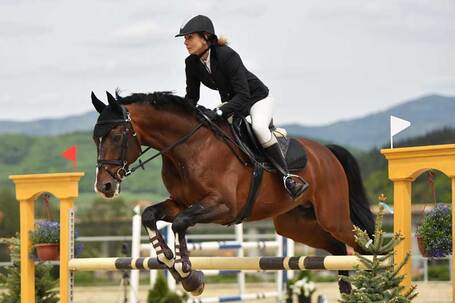
While we may never really know what gives some horses that special quality of heart, it is not a mystery how the all too common problems in jumping develop, and, fortunately, they can be both prevented or retrained through correct work.
A horse and rider are cantering around a jump course when, at the third fence, a sizeable oxer, the horse stops short in the last stride. The rider gets thrown up the horse’s neck, pushes herself back, and then holding the horse in front of the jump, gives him a loud “thwack” with the crop.
They turn away, canter around, and approach the jump a second time. Once again, the horse hits the brakes in the last stride. This time, as the rider fights to regain their balance, the horse jumps quickly to the side, but the rider once again pulls them around back to the base of the jump and punishes the refusal with a smack of her crop.
Once again, they pick up the canter to make another approach. As they straighten out in the approach, the horse starts to rush forward, now anxious about the jump ahead. In the last stride, he stops and quickly leaps out to one side, getting away from the space in front of that fence as quickly as possible.
While the rider was attempting to punish the horse for stopping, can you recognize what really happened?
The horse was lacking the confidence, and perhaps the balance in his approach to jump, so he stopped, but because of the use of the crop, he associated being in front of the jump with being hit, so became anxious about the approach and learned to quickly run out to avoid the smack of the whip.
Many horses develop problems in jumping because they are pushed too fast in their early training. They develop habits such as rushing, stopping, or running out as a result of a lack of confidence around jumping.
Unfortunately, in an attempt to solve the problem, many riders, such as the one in the example above, inadvertently make it worse.
The amount of physical learning that is needed for a horse to jump confidently is underestimated.
Many horses are started over jumps by being pointed at obstacles and expected to leap. The result is that every approach will be slightly different, not providing the horse an opportunity for trial and error learning of how to use his body correctly from take off through to landing.
As long as the horse continues to go, the height is raised and courses are built.
The margin for error becomes smaller as the horse has never learned how to jump out of bad spots when he gets in too tight or doesn’t have enough impulsion in the approach.
As a result, the horse’s confidence can plummet when he has an accident, or a pattern can begin when he stops or ducks out, unable to jump out of a bad spot or a poor balance.
A horse who lacks confidence over jumps will also tend to rush, running forward due to a combination of anxiety and poor balance.
The more the rider attempts to hold the horse back, the more compromised the jump can become, as the horse approaches with too much weight on the forehand, and is unable to reach with their neck, and use their body effectively during the jump.
The key to building skills, confidence, and perhaps even the heart of a jumper, is to build exercises that set up the same approach to the jump each time.
As the horse’s confidence grows, the exercises are expanded and changed, to teach the horse how to adjust their stride, reach with their neck, and round their back over the jumps.
Through the grid work, the horse learns how to use their body, how to jump out of different distances, and they develop the strength and coordination necessary to handle longer courses.
In this kind of jump training, the horse is able to develop confidence, due to the exercises setting them up for success, and for learning to jump without being micromanaged by the rider.
These exercises are important not only for the young horse learning to jump, but also for the horse who needs to be retrained for jumping.
Specific exercises can help the horse learn to jump with confidence again and perhaps rebuild the heart and spirit they once had.
I would like to invite you to join me in the new online course Building the Showjumper with Angelo Telatin.
In this course you will learn the psychology of training a showjumper, and get exercises to practice groundwork preparation all the way through building and riding courses, creating confidence, correcting problems, or preventing future problems from ever developing!
Many horses develop problems in jumping because they are pushed too fast in their early training. They develop habits such as rushing, stopping, or running out as a result of a lack of confidence around jumping.
Learn to rebuild your horse’s confidence through the progression of exercises with Angelo Telatin in Building the Showjumper.
In this Course you will learn:
- To retrain bad habits such as refusals, run-outs and rushing
- How to calm the anxious horse who rushes
- The training of a young horse who has never jumped before
- Why investigative behavior should be allowed, even in the last few strides before the jump
- How to train your horse to jump from any distance
Whether you want a confident, responsive horse for the showjumping course, a steady, even rhythm for the hunter ring, or just to jump a few crossrails in the arena or logs out on the trail for fun, this course with Angelo will improve both you and your horse.
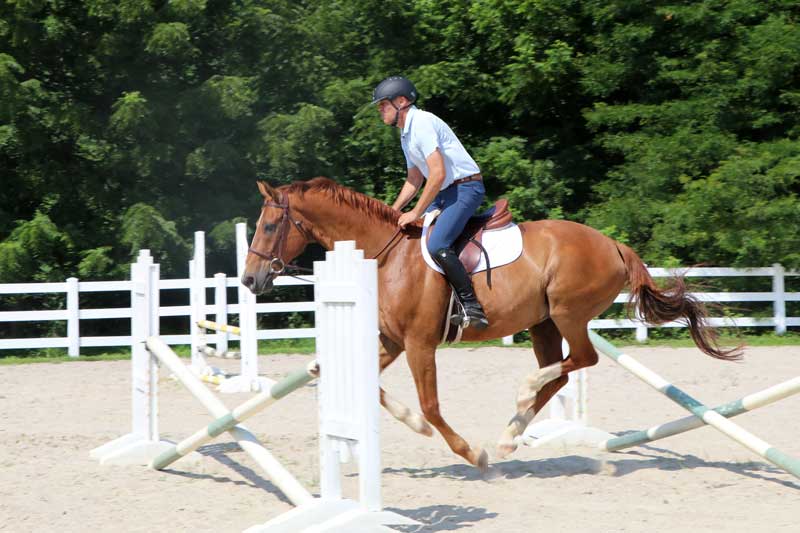
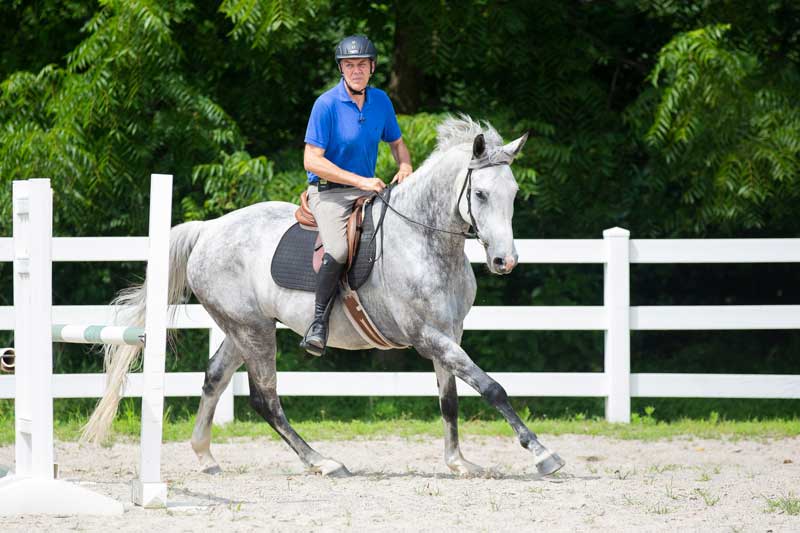
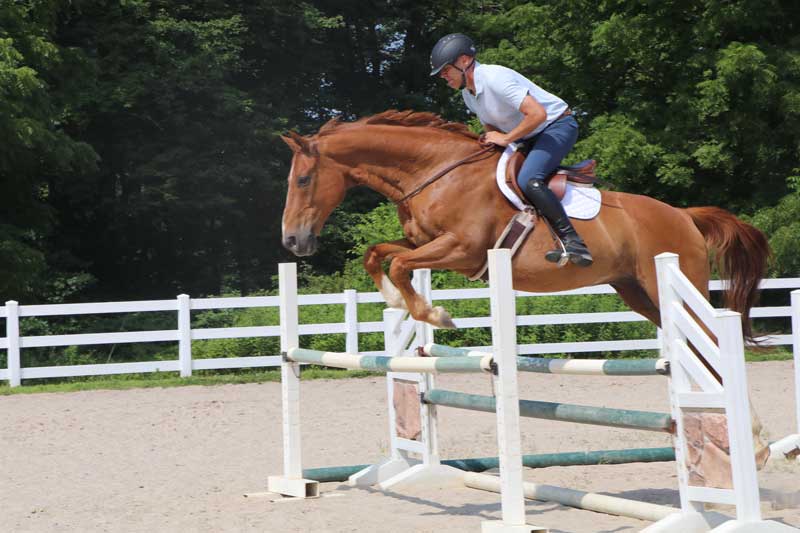
Your Instructor Angelo Telatin
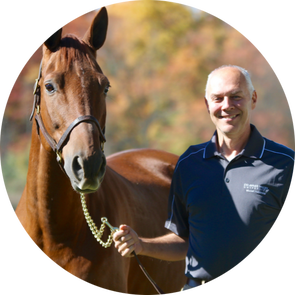
Dr Angelo Telatin is a PhD in Equine Behavior as well as a Professor of Equine Science at Delaware Valley University and an experienced showjump rider, trainer, and coach.
Angelo has brought many young horses from their first jump to successful competitions and has also developed a specialty in retraining jumpers that are “burnt out” and now known for refusals or worse.
His success comes from a slow and systematic approach, teaching the horses one new skill at a time and moving forward when they are showing the necessary skill level and confidence to do so.
Build Your Showjumper
Use These Step by Step Lessons to Jump Confidently and Carefully, with Rhythm and Ease...
Module 1: Learning Psychology and Jumping
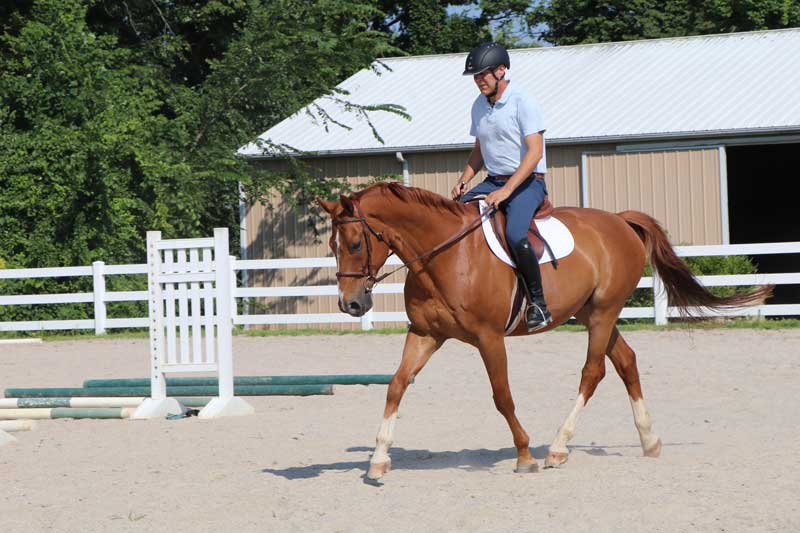
Understand how learning psychology applies to jumping, and how we can use this knowledge to teach the horse to correctly use his body over the jump.
Discover the sequence of training a jumper, beginning with ground work and riding in balance on the flat, then building progressive grids and taking those skills out into course work.
In this section you will learn:
- How horses learn quickly and which memories are strongest for them
- Why jumping problems can develop very quickly
- How going slow in the first parts of training will help your horse go much further later
Module 2: Find Your Jump Position
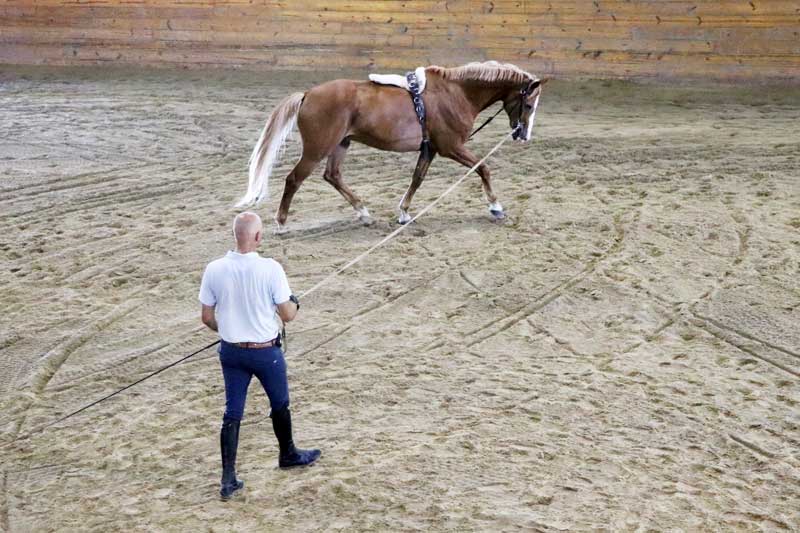
Learn why Angelo considers lunging skills to be a pre-requisite for jumpers.
Discover how lunging and long lining are used to bring the horse into good balance and prepare them for jumping.
In this section you will learn:
- Why training correct movement is best started from the ground
- How cues taught during lunging transfer to riding
- Why developing correct musculature is important for a strong jumper
Module 3: Developing Balance with Grids

In this section of the course, you will discover why gridwork is crucial to setting your horse, and yourself, up for success in jumping.
Learn from Angelo as he shows how simple grids can help different horses learn to slow down, push more, and better use their neck and back to jump effectively.
In this section you will learn:
- How horses learn quickly and which memories are strongest for them
- Why jumping problems can develop very quickly
- How going slow in the first parts of training will help your horse go much further later
Module 4: Conquer the Course
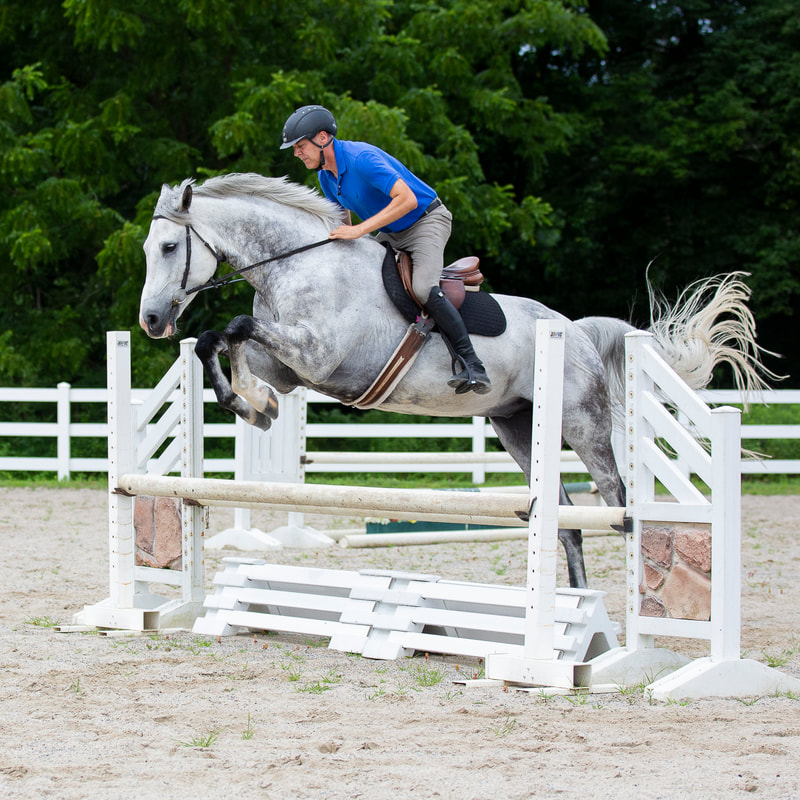
In this section, Angelo teaches how to apply the skills you have been building to a jump course.
Learn when to trot and when to canter your courses, and how to create rhythms in the canter for lines, long approaches, or tight turns.
Angelo also gives tutorials on other important skills for course work such as schooling lead changes.
In this section you will learn:
- Why you need to be able to ride both a short and long distance, and use them strategically
- How to ride the same course several different ways, depending on your horse's strengths
- Key steps to preparing your horse for competitions
Module 5: Solving Common Problems
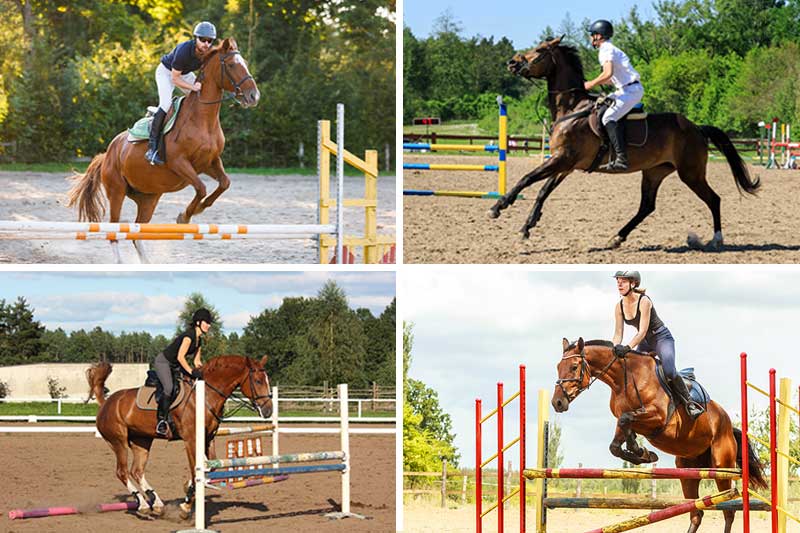
Listen in as Angelo explains what causes many of these common jumping problems and how to work through them, using the exercises you will learn going through the course.
Here are several problems we will address:
- Refusals
- Run-outs
- Rushing
- Pulling rails
Also included in the Course...
Video Coaching
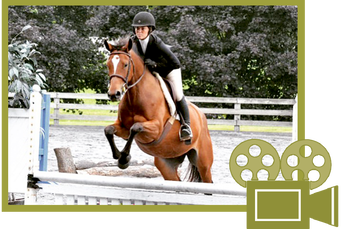
As part of this program, you get the opportunity to work one on one with Angelo through your video coaching session.
Send in a video of you training at home or out at a competition and get specific feedback on how you are progressing, what could be improved, and what your next training steps are.
Be ready for some invaluable feedback and insights!
Bonuses Included for FREE!
#1 - Course Critiques
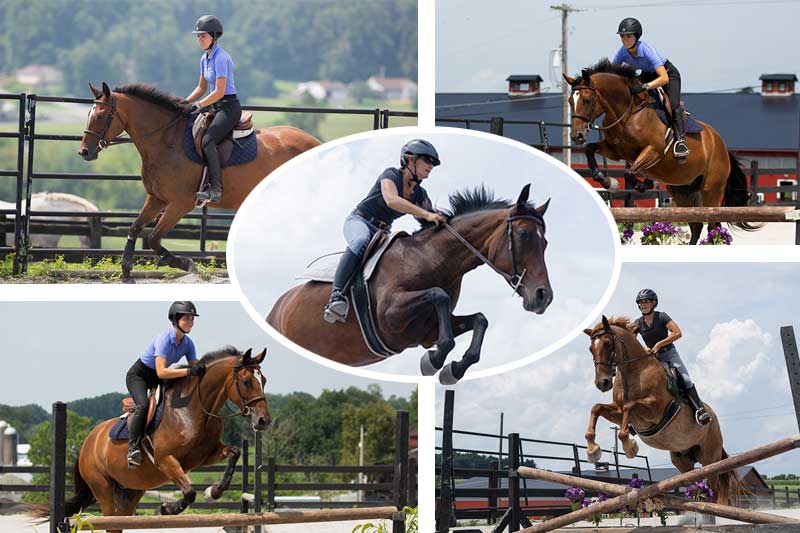
Learn as Angelo critiques horse and rider combinations as they tackle courses.
While watching, listen as Angelo gives expert advice on:
- What they could do differently
- What he sees as the strengths of the horses
- What could be improved
#2 - Course Building Tutorial
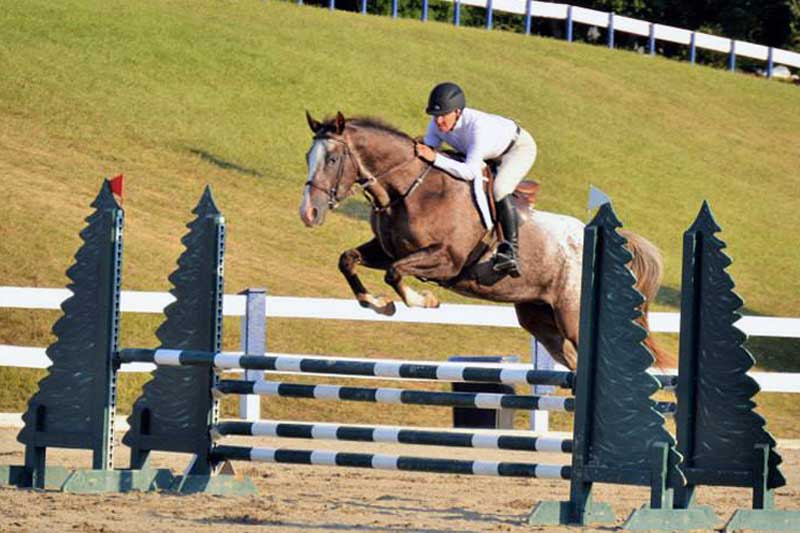
Walk along with experienced course designer, Cherie, as she explains how to build out courses to both improve and test you and your horse’s skills.
Gain a deeper appreciation of what challenges a horse and rider face in the competition ring.
Whether your goals are set for the competition ring or not, skills in course building will help develop and test your horse’s jumping skills.
Plus the better you understand the design of the courses, the more fun they are to ride!
How Does the Course Work?
Go at Your Own Pace
When you join Building the Showjumper, you’re in for life. There is no expiration date, and your access to the videos will never go away. You can continue to review the material as your skills progress.

Get Your Questions Answered
As with all our premium Courses, this is a well supported program so that you can keep making progress and don’t get stuck.
Ask Angelo any questions under each lesson video as you progress through the course and get invaluable feedback and insights through your Video Coaching with Angelo.
This Course is a Great Fit for You If...
- You're stuck with your jumping and looking for a systematic program to follow so you can finally make progress.
- You want to fix a jumping problem such as refusals, run-outs, rushing or pulling rails, you've tried everything but nothing has actually helped.
- You've got your sights set on winning and want to make sure you Set Your Horse Up for Success by following a proven system.
- You're looking for a Steady, Even Rhythm for the Hunter Ring but not sure how to achieve that consistently and reliably.
- You have a horse new to jumping and want to train them the right way, from the very start.
- You want to jump for fun but you need help getting your horse's jump training dialled in so you can feel safe and secure over the jumps together.
In Case You're Wondering...
I get it, life is busy! When you join Building the Showjumper, you are a member for life, so you can go through the course now or later, or as often as you want! You can also participate fully with each live round of the Course and work on new goals.
No, you do not need to own your horse, however, you will need to have the ability to set the grids and exercises for the horse you are riding in order to get the most out of these exercises.
Yes, I am sure we will offer this course again, however, as a student in this first class, you have the advantage of being part of the first group that helps us improve and add to the course, and you will receive all the future additions for Free!
You can get started with Lesson One as soon as you join. The next lessons are released weekly, but you will have continued access to all of the content to revisit as often as you like.
Angelo has brought many young horses from their first jump to successful competitions. He has also developed a specialty for retraining “problem” jumpers. You are in the right place to develop confidence, rhythm and ease.in your horse’s jumping while avoiding or correcting common jumping problems.
While most of the Course content is delivered over the internet, the videos can be customized for playback in slow internet areas. If you do join and find that you can’t participate in the Course as you hoped, we offer a 30 Day Full Money Back Guarantee.
When you join this course, you have lifetime access, so you can go through at your own pace, and retake the Course as many times as you wish!
Absolutely! All of our courses here at CRK Training are designed to help you get more out of any lessons or clinics you are already doing. These courses help to fill in the gaps, all the information that just can’t be covered in the scope of weekly lessons.
Scroll down to the contact form below and send me a message!
30 Day Full Money Back Guarantee
As with all of our HorseClass programs, I want you to be completely confident and comfortable joining Building the Showjumper.
If you are not satisfied with this Course for any reason, return it for a full refund within 30 days of joining.
We would love to have you join us!
